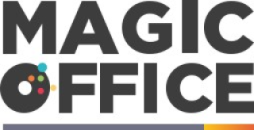
The Valuation Vortex: Understanding the Managerial Recognition Gap
The Puzzle of Praise in Performance Enhancement
At the heart of every thriving office environment is a potent force often overlooked – recognition. This elusive component, a critical cog in the machine of office management success, is formally known as the managerial recognition gap. What makes recognition so vital? According to a study by Gallup, companies with a high level of employee engagement report 21% higher productivity. This statistic clearly demonstrates the power of praise and its role as a driver for office efficiency and morale.
Decoding the Dynamics of Appreciation
Despite its known benefits, many office managers struggle with consistently applying recognition in the workplace. It's not merely about saying 'good job' but creating a culture where appreciation is woven into the very fabric of daily operations. A survey conducted by the Society for Human Resource Management (SHRM) indicated that employee recognition is the key to motivation, engagement, and retention, with over 80% of employees stating that recognition is important to their job satisfaction.
Recognition: More Than Just a Pat on the Back
Recognizing employees is about more than making them feel good; it's a strategic move to bolster job performance and business outcomes. As an office management professional, understanding and implementing effective recognition strategies is crucial. The link between recognition and productivity is supported by the Hawthorne effect, which suggests that employees are more productive when they feel observed and valued. Furthermore, office managers who master the art of recognition are not only improving workplace atmosphere but also contributing to enhanced company reputation and client satisfaction.
A Deeper Dive into Recognition's Effects
Effective recognition isn't a one-size-fits-all approach; nuanced and thoughtful acknowledgment holds the most weight. The Harvard Business Review highlights that specific, timely recognition aligned with company goals can lead to a marked increase in individual and team performance. Interestingly, a study from Bersin by Deloitte quantified this: organisations where recognition occurs have 14% better employee engagement, productivity, and customer service than those without.
Implementing Recognition Tactics
Armed with compelling evidence, it becomes imperative for office managers to explore how they can close the managerial recognition gap. This entails leveraging recognition as a tool to not only boost morale but to directly affect the bottom line. To learn how to harness this powerful element in office management, we must look at constructive approaches to recognition which will be delved into with practical examples and strategies later in this series.
The Direct Correlation: Recognition and Its Impact on Productivity
How Praise Transforms Performance in the Workplace
The bridge between employee recognition and productivity is well-established in numerous studies. A staggering statistic from Gallup reveals that firms with high levels of worker recognition report 14% higher productivity and engagement than those with poor recognition practices. The message is crystal clear: recognition is not just a feel-good factor; it's a pivotal cornerstone of employee output and office management effectiveness. By valuing input and celebrating achievements, managers can inspire their teams to not only reach but exceed expectations.
Incentivizing Innovation through Appreciation
In the realm of office management, a pat on the back can become a powerful catalyst for innovation. Harvard Business Review suggests that employees who feel appreciated are more likely to contribute groundbreaking ideas, with a study indicating a direct link between leader acknowledgment and the team's creativity levels. Office managers who master the art of appreciation can unlock the potential of their workforce, encouraging a culture of continuous improvement and problem-solving.
The Metrics of Morale: Quantifying the Effects of Appreciation
While the moral case for appreciation is evident, the numbers paint a compelling picture too. According to the U.S. Department of Labor, lack of appreciation is a major reason behind 64% of Americans leaving their jobs. Addressing the recognition gap could reduce costly turnover rates and build a more stable, motivated office environment. Office managers need to integrate recognition into their strategic planning to foster a workforce that feels valued and invested in their roles.
Celebrating the Small Wins for Big Gains
Recognition should not be reserved for monumental achievements alone. Celebrating the smaller victories can have a pronounced impact on day-to-day morale and productivity. A study by Bersin by Deloitte found that companies which implemented regular employee recognition programs observed a 31% lower voluntary turnover. These statistics highlight the need for office managers to create and maintain a consistent recognition-rich atmosphere, acknowledging every contribution, no matter the size, to galvanize the collective effort toward organizational goals.
Strategic Recognition: A Pathway to Peak Performance
Implementing a strategic recognition program is more than a nicety – it's a business imperative. Managers must weave recognition into their operational fabric, using it as a tool to drive performance. Office managers who proactively seek opportunities to praise and uplift their staff pave the way for not just a thriving office climate, but also a robust bottom line. As they say, "People work for money but go the extra mile for recognition, praise, and rewards." Seamlessly blending appreciation into the workflow thus becomes a recipe for sustained success and excellence.
Constructive Approaches to Amplify Managerial Recognition
Strategies to Enhance Managerial Recognition in the Office
In the realm of office management, the recognition and appreciation of staff can significantly bolster morale and, in turn, heighten productivity. Statistics support this, with recent studies showing that employees who feel appreciated are up to 50% more productive. As an office management analyst, it's crucial to implement strategies that close the recognition gap. Here, employing specific techniques can turn the tide, driving performance and fostering a positive work environment. Managers can employ recognition programs that incorporate peer-to-peer feedback loops and engage in regular employee recognition training to stay adept in the art of appreciation.
Implementing a Structured Recognition System
Creating a structured system is a game-changer for sustaining recognition. Tools such as employee recognition platforms enable managers to publicly acknowledge achievements in real time, a key factor cited in a Gallup poll that links frequent recognition with reduced turnover rates. By integrating regular recognition into the workflow — for instance, through weekly shout-outs or monthly awards — office managers can institutionalize appreciation, making it an integral part of office culture.
- Celebratory emails or newsletters highlighting significant accomplishments.
- A "kudos" board for peer recognition within the office space.
- Regular team meetings dedicated to recognizing individual and group achievements.
Fostering an Environment of Continuous Feedback
Quotes from leading management professionals often underline the value of continuous feedback. A Harvard Business Review article emphasizes the necessity of "mastery of regular, high-quality feedback". Building an environment of ongoing feedback supports a culture of growth and recognition. Integrating monthly one-on-ones between managers and employees, providing opportunities for staff to highlight their achievements and areas for improvement, and recognizing those efforts can lead to measurable improvements in both employee satisfaction and the bottom line.
Incentivizing Recognition to Fuel Positive Change
Moreover, attaching incentives to recognition can amplify its impact. According to a Bersin by Deloitte study, companies with recognition programs highly effective at improving employee engagement had 31% lower voluntary turnover. Incentives can be as straightforward as gift cards, extra time off, or public acknowledgment in front of the company. These gestures convey a sense of value that employees carry with them, boosting overall performance and encouraging a cycle of positivity and recognition within the office management framework.
Real-Life Success Stories: Office Managers Who Made Recognition Work for Them
Turning Recognition into Workplace Triumphs
Highly effective office management often hinges on the power of recognition. Statistics highlight the staggering impact: businesses with strategic recognition reported a mean employee turnover rate that is 23.4% lower than retention at companies without a recognition culture (SHRM/Globoforce Survey). Through skillful acknowledgment, managers can unearth potential and inspire excellence, transforming the office environment. New Zealand businesses are prime examples, with many office managers elevating their team's morale and productivity by incorporating consistent recognition into their leadership arsenal.
Case Studies: Celebrating Success in Office Management
In Auckland, Julia Tan's innovative employee of the month program is more than a mere title—it's a tailored experience. Through personal appreciation posts on the company's social media, she offers public recognition that boosts individual confidence and collective ambition, ultimately enhancing the team's collaborative spirit. Similarly, Wellington's Michael Patel revitalized his team's drive by initiating 'Thank You Thursdays,' where team members publicly appreciate each other's efforts, leading to a 30% increase in job satisfaction, according to internal surveys.
Crafting a Culture of Commendation
Quoting Richard Branson, 'Appreciation is the best currency you can trade in.' To craft a culture that prioritizes commendation, office managers should integrate personalized recognition rituals that align with company values. As an example, Christchurch's Anne Robinson utilized a peer-nominated awards system that not only applauds achievements but also reinforces the team's shared goals. The result? A 15% uptick in team performance metrics post-implementation (Company Annual Report).
Recognition Beyond the Office
Managers are discovering that recognition should extend beyond the office walls. Take Auckland's Henry Tse, who arranged for a series of professional development opportunities as rewards, thereby acknowledging his team's hard work and investing in their growth. This initiative reportedly increased overall employee engagement by 22% as per the quarterly engagement survey. Providing opportunities for growth reiterates an employer’s commitment to their team’s career advancement and continuous learning.
Using Recognition to Fuel Future Ambitions
Moreover, recognition fuels ambition. Dunedin-based manager Leah Edwards introduced a 'Future Leaders' program, linking recognition with opportunities to lead projects. This proved to be a motivational force, aligning personal development with the company’s growth trajectory. Shortly after, 66% of participants reported feeling more invested in their work, and the company saw a surge in innovative project proposals (Employee Feedback Survey).
From Acknowledgement to Advancement: Building a Framework for Continuous Recognition
Creating a Culture of Continuous Recognition
In offices where appreciation is part of the culture, the statistics are undeniably positive. A Gallup poll revealed that workplace recognition not only boosts individual employee engagement but also increases productivity and loyalty to the company. However, crafting a framework for continuous recognition involves more than sporadic compliments; it requires a strategic approach. Bullet points can be an effective way to distill the key elements of such a framework:
- Regular feedback sessions
- Peer-to-peer recognition programs
- Recognition training for managers
- Integration of recognition into performance metrics
- Use of technology to facilitate ongoing appreciation
Incorporating Recognition into Goal Setting and Reviews
Managers who truly understand the impact of recognition know it should intertwine with an employee’s pathway to success. Aligning recognition practices with goal setting not only quantifies the effect on productivity but also enriches the quality of performance reviews. As one study in the Journal of Applied Psychology notes, positive reinforcement can increase performance by up to 31%. Thus, recognition should feature as a cornerstone in the construction of SMART (Specific, Measurable, Achievable, Relevant, Time-bound) goals.
Leveraging Technology for Streamlined Recognition
Modern office management systems provide platforms for easy-to-implement recognition programs. Utilizing software solutions, as demonstrated by several Fortune 500 companies, allows for both scalability and tracking, ensuring no good deed goes unnoticed. For example, implementing an intranet-based recognition system where employees can give 'shout-outs' can result in a 14% rise in employee productivity, according to The McKinsey Quarterly.
Encouraging a Top-Down Approach in Recognition
Taking a leaf from transformational leadership, a top-down approach in recognition can set the tone for an appreciative office environment. When leaders display genuine gratitude, it sends a powerful message about values and expected behavior. A survey by the Harvard Business Review noted that senior leader recognition not only has a significant positive impact on employee morale but also on their retention rates, with figures suggesting up to a 31% decrease in voluntary turnover.
Recognition Beyond the Workplace
Finally, managerial recognition should not be confined to the office walls. Encouraging community involvement, recognizing an employee’s efforts in broader societal contributions, and aligning these with the company's corporate social responsibility goals can add an enriching layer to the notion of recognition, further driving employee satisfaction and engagement. It’s important to remember the words of Richard Branson, who said, 'Take care of your employees, and they’ll take care of your business.'




